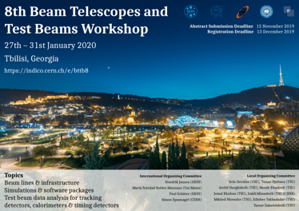Speaker
Description
During the first Long Shutdown (LS1) of the LHC the Insertable B-Layer (IBL) was installed in the ATLAS experiment to improve the tracking performance. It is placed between the existing inner pixel layer and a new beam pipe. Because of the small distance to the interaction point, the planar and 3D sensors of the IBL are exposed to a high flux of ionizing radiation. The planar n$^+$-in-n pixel sensors are designed to withstand a fluence of $5\cdot10^{15}\,\text{n}_\text{eq}/\text{cm}^2$. The pixels with a size of $250\,\mu$m $\times$ $50\,\mu$m are arranged in a matrix of $80$ columns and $336$ rows and they are read out with the FE-I4B read-out chip.
These IBL sensors are the baseline for new pixel implantation shapes designed in Dortmund. The new shapes are designed to increase the electrical field strength maxima and thus increase the charge collection. Higher particle detection efficiencies at lower voltages, especially after irradiation, could be achieved.
In this talk, test beam results of irradiated sensors with modified pixel implantation shapes are presented. Results after various annealing steps are compared to laser-induced charge collection measurements performed in the lab.




